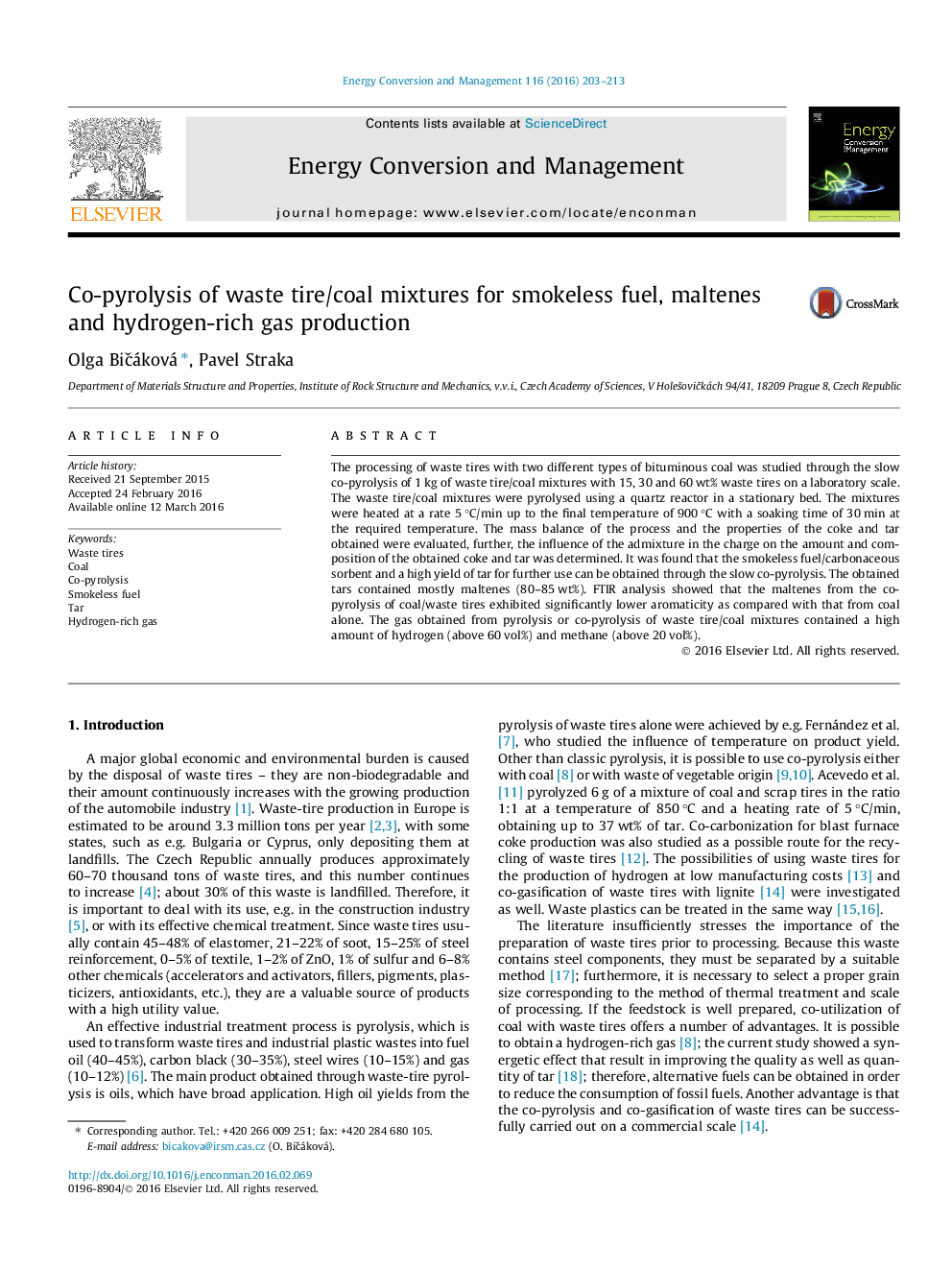| Article ID | Journal | Published Year | Pages | File Type |
|---|---|---|---|---|
| 760240 | Energy Conversion and Management | 2016 | 11 Pages |
•Co-pyrolysis of waste tires/coal mixtures yields mainly smokeless fuel (55–74 wt%).•Alternatively, the smokeless fuel can serve as carbonaceous sorbent.•The obtained tar contained maltenes (80–85 wt%) and asphaltenes (6–8 wt%).•Tar from co-pyrolysis can serve as heating oil or a source of maltenes for repairing of asphalt surfaces.•The hydrogen-rich gas was obtained (61–65 vol% H2, 24–25 vol% CH4, 1.4–2 vol% CO2).
The processing of waste tires with two different types of bituminous coal was studied through the slow co-pyrolysis of 1 kg of waste tire/coal mixtures with 15, 30 and 60 wt% waste tires on a laboratory scale. The waste tire/coal mixtures were pyrolysed using a quartz reactor in a stationary bed. The mixtures were heated at a rate 5 °C/min up to the final temperature of 900 °C with a soaking time of 30 min at the required temperature. The mass balance of the process and the properties of the coke and tar obtained were evaluated, further, the influence of the admixture in the charge on the amount and composition of the obtained coke and tar was determined. It was found that the smokeless fuel/carbonaceous sorbent and a high yield of tar for further use can be obtained through the slow co-pyrolysis. The obtained tars contained mostly maltenes (80–85 wt%). FTIR analysis showed that the maltenes from the co-pyrolysis of coal/waste tires exhibited significantly lower aromaticity as compared with that from coal alone. The gas obtained from pyrolysis or co-pyrolysis of waste tire/coal mixtures contained a high amount of hydrogen (above 60 vol%) and methane (above 20 vol%).
